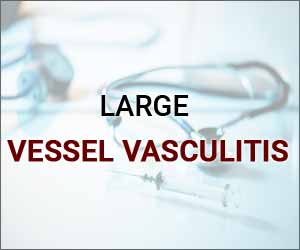- Home
- Editorial
- News
- Practice Guidelines
- Anesthesiology Guidelines
- Cancer Guidelines
- Cardiac Sciences Guidelines
- Critical Care Guidelines
- Dentistry Guidelines
- Dermatology Guidelines
- Diabetes and Endo Guidelines
- Diagnostics Guidelines
- ENT Guidelines
- Featured Practice Guidelines
- Gastroenterology Guidelines
- Geriatrics Guidelines
- Medicine Guidelines
- Nephrology Guidelines
- Neurosciences Guidelines
- Obs and Gynae Guidelines
- Ophthalmology Guidelines
- Orthopaedics Guidelines
- Paediatrics Guidelines
- Psychiatry Guidelines
- Pulmonology Guidelines
- Radiology Guidelines
- Surgery Guidelines
- Urology Guidelines
MRI and PET combo improves detection of vasculitis abnormalities, finds study

A combination of Magnetic Resonance Imaging (MRI) and Positron Emission Tomography (PET) may improve detection of vasculitis abnormalities, revealed a study published in the scientific reports.
By merging contrast-enhanced anatomic assessments of Magnetic Resonance Imaging with the quantitative measurement of FDG uptake in PET, the researchers were able to accurately characterize and differentiate between inflammation and fibrosis in the aortic walls and auxiliary branches. Information gleaned from the hybrid modality could help direct clinicians to more appropriate treatment for patients with large-vessel vasculitis and reduce the need for temporal artery biopsies.
Large-vessel vasculitis is characterized by inflammation in the walls of the aorta, or aortitis, and its main branches, which can result in stenosis and aneurysms. The two main forms of the condition are giant cell arteritis (GCA) and Takayasu's arteritis (TA). In both cases, their diagnoses can be difficult, especially in patients who present with GCA symptoms but have negative results on temporal artery biopsies.
All consecutive patients with LVV from the Department of Internal Medicine who underwent PET/MRI were included. Three PET/MRI patterns were defined: (i) “inflammatory,” with positive PET (>liver uptake) and abnormal MRI (stenosis and/or wall thickening); (ii) “fibrous”, negative PET (≤liver uptake) and abnormal Magnetic Resonance Imaging; and (iii) “normal”. Thirteen patients underwent 18 PET/MRI scans. PET/MRI was performed at diagnosis, at relapse, or during remission.
Key results
- Among the 18 scans, eight (44%) showed an inflammatory pattern and three (17%) a fibrous pattern; the other seven were normal.
- The distribution of the three patterns did not differ between patients with Takayasu arteritis (TA, n = 10 scans) and those with giant cell arteritis (GCA, n = 8 scans).
- PET/MRI findings were normal in 2/10 TA scans vs. 5/8 GCA scans.
- Median SUVmax was 4.7 vs. 2 in patients with active disease vs. remission, respectively.
- PET/MRI is a new hybrid imaging modality allowing a comprehensive and multimodal analysis of vascular wall inflammation and the vascular lumen.
Read more: New MRI may reveal molecular changes in the brain

Disclaimer: This site is primarily intended for healthcare professionals. Any content/information on this website does not replace the advice of medical and/or health professionals and should not be construed as medical/diagnostic advice/endorsement or prescription. Use of this site is subject to our terms of use, privacy policy, advertisement policy. © 2020 Minerva Medical Treatment Pvt Ltd